You have three teams. The team has a new project called Hotel Technology. Hotel Technology provides end to end solution for room reservation and guest management. You create two main system the first one is web app (team A) and the second one is a windows app (Team B). Both developed with .NET Standard. The problem is two apps need one custom package namely Hotel Backend package. Hotel Backend Package is a custom package that updated by another teams (Team C). The question is how to make sure that the Team A and Team B always obtain the latest version of the Team C custom package. This kind scenario can be helped by the Azure Artifacts.
Azure Artifacts is a new kid on the block that help teams to maintain a development package that can be used across the team. Imagine the concept of custom dependency for a project. Azure Artifacts helps you to manage the package. Let's get started how we do that.
- Creating new feeds
- Registering feed to Package Manager
- Configuring the Builds Pipeline
- Obtain the feed artifacts
Creating new feeds
On this scenario, team c creates a feed. Feed is endpoint that broadcasted the custom package. In the Azure artifact, you can create new feed easily. The feed will be broadcasted as an URL that can be consumed through Visual Studio or another system. Feed works like NuGet
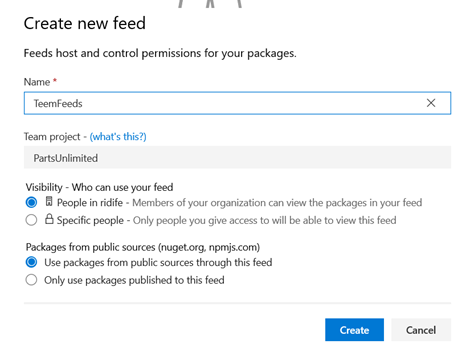
Registering feed to Package Manager
After creating a feed, you will obtain unique URL that can be registered in Visual Studio. This can be done by visiting NuGet package manager and add the package sources.
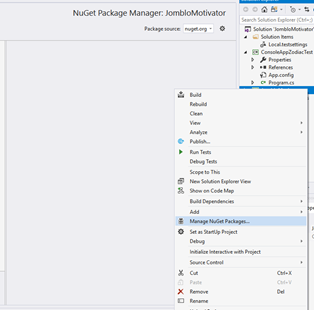
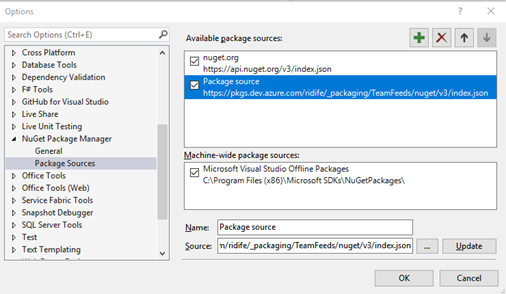
Configuring the build pipeline
The registered feed can be pushed by the Azure Pipeline. With NuGet Push, we can push the result of the build to the feed.
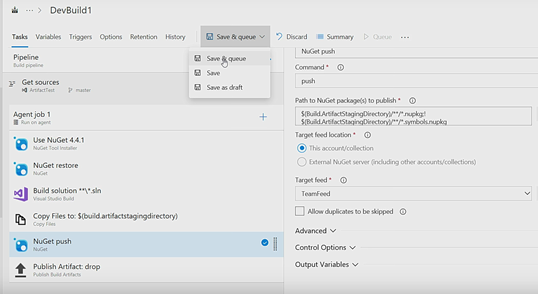
Obtain the feed
The feed can be obtained by refreshing the feed in visual studio or Azure artifacts page
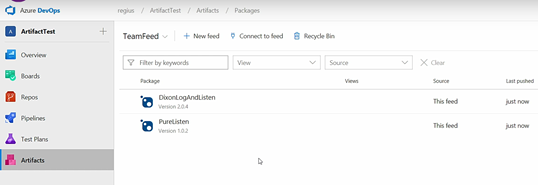
That's it, enjoy the artifacts and package management